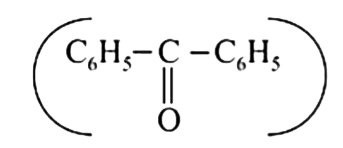A Punnett square can help in obtaining:
Genotypes
Phenotypes
Genotypic and Phenotypic ratios
All of these
The correct Answer is:D
Step-by-Step Solution:
1. Understanding the Punnett Square: The Punnett square is a diagram that is used in genetics to predict the outcome of a particular cross or breeding experiment. It is named after the geneticist Reginald C. Punnett.
2. Purpose of the Punnett Square: The primary purpose of the Punnett square is to determine the possible genotypes of offspring from a genetic cross. It helps in visualizing how alleles from the parents combine.
3. Genotypes and Phenotypes:
- Genotype refers to the genetic makeup of an organism (e.g., AA, Aa, aa).
- Phenotype refers to the observable traits or characteristics of an organism (e.g., flower color, height).
4. Genotypic and Phenotypic Ratios: The Punnett square also allows us to calculate the ratios of different genotypes and phenotypes that can result from the genetic cross.
- Genotypic ratio is the ratio of different genotypes produced (e.g., 1:2:1 for a monohybrid cross).
- Phenotypic ratio is the ratio of different phenotypes produced (e.g., 3:1 for a monohybrid cross).
5. Conclusion: Since the Punnett square can help in obtaining genotypes, phenotypes, and their respective ratios, the correct answer to the question is "all of these".
Final Answer: D) All of these.
---
- Genotype refers to the genetic makeup of an organism (e.g., AA, Aa, aa).
- Phenotype refers to the observable traits or characteristics of an organism (e.g., flower color, height).
- Genotypic ratio is the ratio of different genotypes produced (e.g., 1:2:1 for a monohybrid cross).
- Phenotypic ratio is the ratio of different phenotypes produced (e.g., 3:1 for a monohybrid cross).
Topper's Solved these Questions
- BOOK - EDUCART PUBLICATIONCHAPTER - SAMPLE PAPER 3EXERCISE - SECTION - C12videos
SAMPLE PAPER 3
- BOOK - EDUCART PUBLICATIONCHAPTER - SAMPLE PAPER 3EXERCISE - SECTION - C12videos
SAMPLE PAPER 3
- BOOK - EDUCART PUBLICATIONCHAPTER - SAMPLE PAPER 2 EXERCISE - SECTION-C12videos
SAMPLE PAPER 2
- BOOK - EDUCART PUBLICATIONCHAPTER - SAMPLE PAPER 4 (SOLVED)EXERCISE - SECTION -C12videos
SAMPLE PAPER 4 (SOLVED)
Similar Questions
Knowledge Check
- Question 1 - Select One
I can help you.
AYou could be helped by meBYou can be helped by meCYou can be help by meDYou could be help by me - Question 2 - Select One
Punnett square was developed by
ABritish Zoologist, Reginald C. PunnettBGerman Botanist, Reginald C. PunnettCStanford Geneticist Reginald C. PunnettDBritish Geneticist Reginald C. Punnett - Question 3 - Select One
 can be obtained in : AC6H5−C≡C−C6H5+HOHHg2+/H⊕−−−−−−→B
can be obtained in : AC6H5−C≡C−C6H5+HOHHg2+/H⊕−−−−−−→B CC6H5−CH2−C6H5KMnO4−−−−−−−→ΔDC6H5−≡CH(i)BH3−THF−−−−−−−−−−−→(ii)H2O2/ΘOH
CC6H5−CH2−C6H5KMnO4−−−−−−−→ΔDC6H5−≡CH(i)BH3−THF−−−−−−−−−−−→(ii)H2O2/ΘOH
Using a Punnett square, work out the distribution of phenotypic features in the first filial generation after a cross between a homozygous female and a heterozygous male for a single locus.
View SolutionSelect the option with correct set of statements for Punnett square. (1) Developed by British geneticist. (2)Used to calculate the probability of genotypes offsprings. (3)Useful for monohybrid crosses only. (4) It is a mathematical formula which helps to calculate the types of gametes.
View SolutionBeing able to use a Punnett square to track the pattern of inheritance in a two-characteristic cross (e.g., pea seed color and seed shape) demonstrates Mendel's idea of
View SolutionAI can be obtained by
View SolutionWhen a dihybrid cross is fit into a Punnett square with 16 boxes, the maximum number of different phenotypes available are:
View Solution

